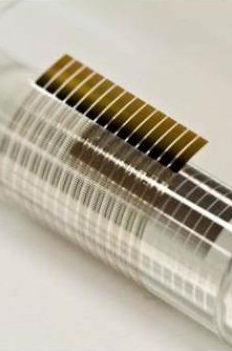A flexible future for children of the sun
 The Sun is still seen by some as an inconsistent resource, but developments in the US will help grab a hold of its unending power supplies in a cheaper, more efficient and more flexible way.
The Sun is still seen by some as an inconsistent resource, but developments in the US will help grab a hold of its unending power supplies in a cheaper, more efficient and more flexible way.
One of the reasons that resources with long-lasting and useful applications are simply burned for electricity is that we cannot harvest the Sun’s energy well enough.
A team of researchers have taken a new step on the road to sustainable energy gathering, developing a way to create large sheets of nano-textured, silicon micro-cell arrays that can make solar cells lightweight, more efficient, bendable and easy to mass produce.
The development has been made in a crucial part of the solar energy harvesting cycle – the unit’s ability to converted light once it is captured into electricity.
To do this, engineers created a light and flexible home for an advanced light-trapping scheme.
A team from the University of Central Florida in Orlando have created a light-trapping scheme based on a nano-imprinting technique where a polymeric stamp mechanically embosses the nano-scale pattern on to the solar cell, without involving further complex lithographic steps.
“This approach has led to the flexibility researchers have been searching for, making the design ideal for mass manufacturing,” says lead researcher Professor Debashis Chanda.
The better light-trapping technique could lead to the creation of solar-power devices which are more reliable by being better are storing and releasing energy over time.
The development is so significant it even made the cover of the journal in which the report is published; Advanced Energy Materials.








 Print
Print